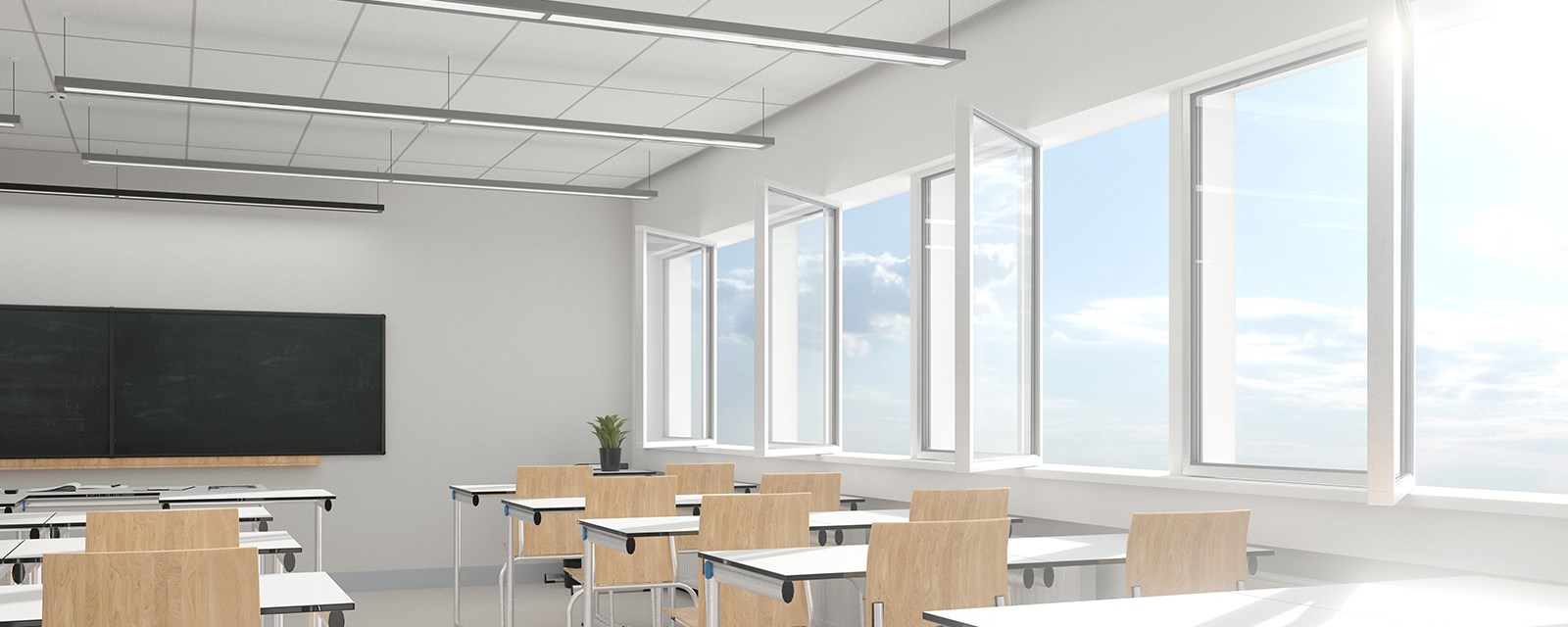
COVID-19: Schools urgently need guidelines on improving ventilation in classrooms
There is an urgent need for guidelines on how schools can use ventilation to reduce the risk of COVID-19 transmission in the classroom, according to doctors at Imperial College London and the headteacher of a secondary school in Pinner, Middlesex. In a commentary published by the Journal of the Royal Society of Medicine, the authors say that improving air quality in classroom spaces should be as important as following government advice regarding social distancing, mask wearing and hand washing.
The authors point to lessons from the airline industry, where the risk of contracting COVID-19 on a flight is currently lower than from an office building or a classroom. Lead author Dr Kaveh Asanati, Honorary Clinical Senior Lecturer in occupational lung disease at the National Heart & Lung Institute, Imperial College London, said: “The multi-layer risk reduction strategy used in the aviation industry seems to have been working efficiently. The strategy includes testing passengers, the use of face coverings or masks, hygiene measures and, more importantly, maintaining clean air by circulating a mix of fresh air and recycled air through High-Efficiency Particulate Air (HEPA) filters.”
Few school buildings have HEPA filtration but a potential practical option for schools would, according to the authors, be the use of portable HEPA filtration units. They say that the US Centers for Disease Control and Prevention recommends for healthcare workers during COVID-19 pandemic to consider the addition of these units to augment air quality in areas when permanent air-handling systems are not a feasible option. The authors go on to describe a study in a hospital room of COVID-19 patients, where the researchers were able to detect SARS-CoV-2 in aerosols, only when they used the air samplers without a HEPA filter on the inlet tube.
Dr Asanati said: “To keep schools open, there is an urgent need to implement more effective on-site mitigation strategies, with particular attention to ventilation and testing. In addition, it is essential that teachers and other school staff should be added to the priority list for vaccination.”
The authors say a feasibility study of implementing better ventilation and filtration systems in schools is needed, as well as some pilot work and research involving indoor air quality and heating, ventilation and air conditioning (HVAC) experts. Until then, they write, keeping doors and windows open – for as much as is reasonably practicable – seems to be the best way forward.
Notes to editors
Healthier schools during COVID-19 pandemic: ventilation, testing and vaccination (DOI: 10.1177/0141076821992449) by Kaveh Asanati, Louise Voden and Azeem Majeed will be published by the Journal of the Royal Society of Medicine at 00:05 hrs (UK time) on Saturday 6 February 2021.
The link for the full text version of the paper when published will be: https://journals.sagepub.com/doi/full/10.1177/0141076821992449
For further information or a copy of the paper please contact:
Rosalind Dewar
Media Office, Royal Society of Medicine
DL: +44 (0) 1580 764713
M: +44 (0) 7785 182732
E: media@rsm.ac.uk
The Journal of the Royal Society of Medicine (JRSM) is a leading voice in the UK and internationally for medicine and healthcare. Published continuously since 1809, JRSM features scholarly comment and clinical research. JRSM is editorially independent from the Royal Society of Medicine, and its editor is Dr Kamran Abbasi.
JRSM is a journal of the Royal Society of Medicine and it is published by SAGE Publishing.
Sara Miller McCune founded SAGE Publishing in 1965 to support the dissemination of usable knowledge and educate a global community. SAGE is a leading international provider of innovative, high-quality content publishing more than 1000 journals and over 800 new books each year, spanning a wide range of subject areas. A growing selection of library products includes archives, data, case studies and video. SAGE remains majority owned by our founder and after her lifetime will become owned by a charitable trust that secures the company’s continued independence. Principal offices are located in Los Angeles, London, New Delhi, Singapore, Washington DC and Melbourne. www.sagepublishing.com
